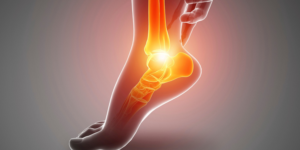
Treating Plantar Fasciitis Without Steroid Injections
Treating Plantar Fasciitis Without Steroid Injections If you’ve ever felt sharp heel pain with your first morning steps, you’re not alone. Plantar fasciitis—inflammation of the

You’ve tried rest, painkillers, maybe even a few massages—but that nagging ache just won’t leave you alone. Persistent pain can be frustrating, draining, and confusing. The truth is, if your pain isn’t going away, there’s usually more going on beneath the surface.
In this article, we’ll uncover the five most common reasons your pain won’t disappear—and explain how physiotherapy and integrative treatment can finally put an end to it.
Pain is your body’s way of signaling that something needs attention. While acute pain (like after an injury) is temporary, chronic pain persists long after tissues should have healed. It’s not “in your head”—it’s often a sign that your body has adapted to dysfunction or is stuck in a stress-pain loop.
The key to true relief lies in identifying the underlying causes and addressing them systematically, not just masking the symptoms.
Many people focus on quick fixes—like painkillers, ice, or massage—to manage pain. While these methods can help temporarily, they don’t solve why the pain exists.
For example:
Back pain might be caused by weak glute muscles.
Shoulder pain could stem from poor posture or neck tension.
Knee pain might trace back to tight hips or flat feet.
At our clinic, we use a root-cause approach. Through assessment and movement analysis, we uncover the real source of your pain, then design a tailored plan to address it—ensuring lasting change.
Movement is medicine—but only when done correctly. Many people unknowingly move in ways that reinforce pain patterns, like sitting with a rounded spine, walking unevenly, or lifting improperly.
Physiotherapy helps you retrain your body’s movement patterns, improving coordination and posture. Using guided exercises, mobility work, and strengthening, we help you move with efficiency and balance—reducing pain and preventing re-injury.
Even subtle adjustments, like how you sit or stand, can make a world of difference over time.
When one muscle group overworks to compensate for another that’s weak, it creates a tug-of-war within your body. This imbalance can cause chronic tension and pain.
For example:
Weak core muscles can overburden your lower back.
Tight hip flexors can pull the pelvis forward, stressing your spine.
Underused shoulder stabilizers can cause upper back or neck pain.
Physiotherapy targets these imbalances with specific strengthening and stretching routines to restore harmony. Once the body is balanced again, pain naturally begins to fade.
Pain isn’t just physical—it’s influenced by your emotional and mental state. Chronic stress releases cortisol, which heightens sensitivity to pain and slows healing.
If you’re not sleeping well, hydrating enough, or managing stress effectively, your recovery suffers. This creates a cycle where your body never gets the rest it needs to repair tissues or calm inflammation.
We integrate mind-body techniques—like breathing exercises, posture awareness, and gentle movement—to reduce stress and improve recovery. Sometimes, improving sleep and relaxation can be as powerful as exercise in healing persistent pain.
One of the most common mistakes people make is stopping treatment as soon as the pain improves. Pain is often the last symptom to appear and the first to fade—but the underlying dysfunction may still be there.
Without completing your rehabilitation, you risk slipping back into old movement habits, and the pain inevitably returns.
At our clinic, we guide you through every stage—from pain relief to full strength restoration—ensuring your progress sticks for good. Think of it as graduating from pain, not just escaping it temporarily.
Our team of physiotherapists and rehabilitation specialists doesn’t just treat pain—we teach your body how to heal itself.
Here’s how we help you move beyond pain:
| Our Approach | Your Benefit |
|---|---|
| Comprehensive physical assessment | Identify the real cause of pain |
| Personalized exercise programs | Strengthen weak areas safely |
| Manual therapy and mobilization | Release tension and restore motion |
| Education and prevention strategies | Empower you to stay pain-free |
| Lifestyle and posture coaching | Support long-term results |
Through consistent care and personalized guidance, our patients often see significant improvements in both function and comfort within weeks.
If your pain has lasted more than three months, interrupts your sleep, or limits your daily activities, it’s time to seek professional support. Ignoring pain only allows dysfunction to deepen.
Whether you’ve had a recent injury, recurring discomfort, or unexplained tension, our team can design a targeted physiotherapy plan to help you recover safely and effectively.
Pain that lingers doesn’t mean your body is broken—it means it’s asking for a smarter approach. By understanding the reasons behind your discomfort and treating them holistically, lasting recovery becomes possible.
At our clinic, we blend science, movement, and personalized care to help you take control of your healing journey. You don’t have to live with pain—you just need the right plan, the right support, and the right team.
How do I know if my pain is chronic?
Pain lasting longer than 3 months, or returning frequently, is considered chronic and may need professional assessment.
Can stress really make my pain worse?
Yes. Chronic stress increases inflammation and muscle tension, which can intensify pain signals.
Do I need imaging (like an MRI) to find out what’s wrong?
Not always. Many musculoskeletal issues can be diagnosed through a thorough physical and movement assessment.
What’s the difference between managing pain and fixing it?
Pain management focuses on relief; fixing pain addresses the root cause so it doesn’t return.
How long will it take to feel better?
Every case is unique, but many patients begin noticing measurable improvements within 4–6 sessions.

Treating Plantar Fasciitis Without Steroid Injections If you’ve ever felt sharp heel pain with your first morning steps, you’re not alone. Plantar fasciitis—inflammation of the

Best Home Exercises to Support Your Physio Progress When you walk out of a physiotherapy session, the real work isn’t over—it’s just beginning. Continuing your

The Science Behind Osteopathy: A Deep Dive for Patients Osteopathy often sparks curiosity among those searching for safe and effective pain relief methods. While its